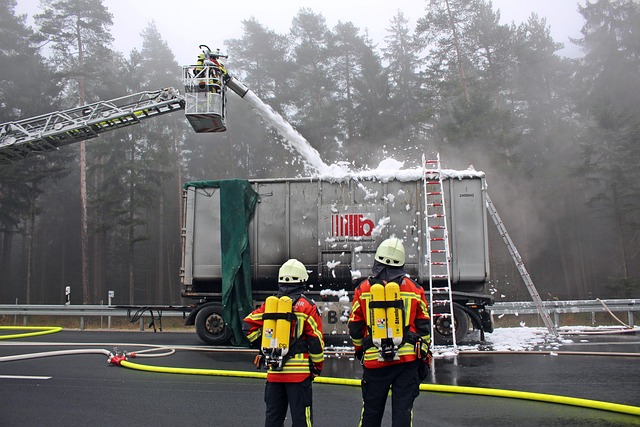Uncovering Car Accident Fault: Evidence Gathering Strategies

Establishing car accident fault involves a complex process varying by jurisdiction, considering negl…….
Car accident fault, a multifaceted concept, refers to the analysis and determination of liability in motor vehicle collisions. It involves a meticulous examination of various factors that contribute to or cause accidents, ultimately aiming to assign responsibility and ensure accountability. In an era where road safety is a global concern, understanding car accident fault becomes paramount. This comprehensive article delves into the intricacies of this topic, exploring its historical roots, current trends, economic implications, technological innovations, policy frameworks, challenges, and future prospects. By the end, readers will grasp the significance of car accident fault in shaping safer driving environments worldwide.
Car accident fault is a legal and investigative process that seeks to answer critical questions after a vehicular crash: Who is at fault? What factors led to the accident? This analysis involves a detailed examination of multiple elements, including driver behavior, vehicle conditions, road design, environmental factors, and adherence to traffic regulations.
Historically, assigning fault in car accidents was often subjective, relying on eyewitness accounts and circumstantial evidence. However, with advancements in technology and a growing emphasis on road safety, more sophisticated methods have emerged. Today, car accident fault determination is a complex process that utilizes data analysis, forensic engineering, and expert testimony to construct a comprehensive understanding of the incident.
Core Components:
Car accident fault is not a one-size-fits-all concept; its impact and trends vary across regions due to differences in infrastructure, cultural norms, and regulatory frameworks.
North America: The United States and Canada have seen significant improvements in road safety standards and technologies over the years. Advanced driver-assistance systems (ADAS) are increasingly common, aiming to prevent accidents through features like automatic emergency braking and lane departure warnings. However, challenges remain, particularly with emerging technologies and the need for uniform safety standards.
Europe: Known for its stringent safety regulations, Europe has led the way in vehicle safety standards. The European New Car Assessment Program (Euro NCAP) sets high benchmarks for crashworthiness, offering detailed ratings to consumers. This region also promotes innovative solutions like connected vehicles and smart infrastructure to enhance road safety.
Asia Pacific: Rapid urbanization and a growing middle class in countries like China and India have led to a surge in vehicle ownership, increasing the need for effective accident management. These regions are adopting advanced technologies, but challenges include enforcing traffic rules and improving road infrastructure.
Latin America and Middle East: These regions often face unique issues, including high rates of pedestrian and motorcycle involvement in accidents due to cultural and infrastructural factors. Implementing safety campaigns and promoting public transport is crucial here.
The economic aspects of car accident fault are multifaceted, impacting various sectors.
Healthcare: Road traffic accidents result in significant healthcare costs, including emergency care, hospitalization, rehabilitation, and long-term support for survivors. These expenses vary across countries but pose a substantial financial burden.
Insurance: The insurance industry plays a critical role in managing car accident fault. Claims processing, liability assessment, and premium setting are influenced by regional trends and legal frameworks. Insurance companies invest heavily in risk assessment and data analytics to predict and mitigate losses.
Automotive Industry: Manufacturers are driven by safety regulations and consumer demand to incorporate advanced safety features. This creates a dynamic market for vehicle technologies, with constant innovation aimed at reducing accidents and improving fault determination processes.
Government Expenditure: Public funds are allocated to road infrastructure development, traffic enforcement, and public awareness campaigns. The economic impact of car accidents influences budget allocations and policy decisions.
Technology has revolutionized the way car accident fault is investigated and managed.
| Advancement | Impact | Future Potential |
|---|---|---|
| Advanced Data Analytics: Utilizing big data analytics, machine learning algorithms can analyze vast datasets from accidents to identify patterns and trends, aiding in fault determination. | Improved prediction of accident hotspots and risk factors. | Development of predictive models for personalized safety recommendations. |
| Forensic Engineering Software: These tools enable engineers to reconstruct accidents, simulating crash scenarios with high precision. | Accurate reconstruction of accident sequences, helping to establish causal links. | Integration with virtual reality for immersive training in accident investigation. |
| Connected Vehicles and IoT: Vehicle-to-vehicle (V2V) and vehicle-to-infrastructure (V2I) communication can enhance road safety by sharing real-time data. | Real-time collision avoidance systems and improved fault detection in complex scenarios. | Evolution of smart cities with adaptive traffic management systems. |
| Autonomous Vehicles: Self-driving cars use sophisticated sensors and AI to navigate, potentially reducing human error. | Long-term impact on accident rates and liability frameworks. | Transformation of transportation, requiring new legal and regulatory structures. |
Government policies and regulations significantly influence how car accident fault is handled globally.
Traffic Laws and Regulations: These govern driver behavior, vehicle standards, and road infrastructure, providing a framework for accident prevention and fault allocation.
Liability Laws: Determining legal liability in accidents is crucial. Strict liability laws hold all drivers accountable, while fault-based systems allocate responsibility based on negligence.
Safety Standards: Regional bodies set safety standards for vehicles, such as crash tests, airbag requirements, and child safety regulations, which impact accident outcomes.
Insurance Regulations: Government agencies oversee insurance industry practices to ensure fair claims processing and consumer protection.
Despite significant progress, car accident fault faces several challenges and criticisms.
Subjectivity in Data Interpretation: Human involvement in data analysis can introduce biases, especially with subjective factors like driver behavior assessment. Standardizing evaluation methods is essential.
Emerging Technologies and Liability: As new technologies enter the market, determining liability becomes complex, particularly with autonomous vehicles. Clear legal frameworks are needed to address these challenges.
Data Privacy Concerns: Collecting and sharing data for analysis raises privacy issues. Striking a balance between safety gains and individual privacy is crucial.
Uneven Application of Regulations: Inconsistent enforcement of traffic rules and safety standards across regions can lead to disparities in accident rates and fault allocation.
Proposed Solutions:
Case Study 1: Sweden’s Vision Zero Initiative
Sweden’s road safety approach, Vision Zero, aims to eliminate traffic fatalities and severe injuries. This strategy involves a holistic view of road design, vehicle technology, driver behavior, and legal frameworks. By focusing on preventing accidents rather than managing their consequences, Sweden has achieved remarkable success, reducing traffic deaths by 70% over two decades.
Case Study 2: Singapore’s Comprehensive Safety System
Singapore employs a multi-faceted approach to road safety, combining strict traffic laws, advanced driver licensing systems, and sophisticated vehicle testing procedures. They also utilize data analytics to identify accident hotspots and implement targeted interventions, resulting in one of the lowest traffic fatality rates globally.
The future of car accident fault is shaped by emerging technologies, changing demographics, and evolving consumer expectations.
Advanced Data Analytics and AI: As data collection methods improve, artificial intelligence will play a pivotal role in analyzing complex data sets, predicting accidents, and providing real-time insights for safer driving.
Autonomous Vehicles and Shared Mobility: The rise of self-driving cars and ride-sharing services will transform accident fault dynamics. New business models and liability frameworks may emerge, requiring adaptive legal structures.
Smart Cities and Infrastructure: Urban planning will integrate smart technology, enhancing road safety through adaptive traffic signals, real-time parking management, and improved pedestrian infrastructure.
Global Data Sharing and Standardization: International collaboration on data sharing and standardization can lead to more effective accident prevention strategies and consistent fault determination methods.
Car accident fault is a dynamic field, constantly evolving with technological advancements and changing societal needs. As global road networks continue to expand, ensuring safer driving environments becomes increasingly crucial. This article has provided a comprehensive overview of the concept, its historical context, current trends, economic implications, and future prospects.
The key takeaways highlight the importance of:
By addressing these aspects, the world can move closer to a future where car accidents are not only managed more effectively but largely prevented, ultimately saving lives and shaping happier, healthier communities.

Establishing car accident fault involves a complex process varying by jurisdiction, considering negl…….

Determining car accident fault is a multifaceted process where insurers assess driver behavior, vehi…….

Insurance companies play a vital role in determining car accident fault through meticulous reviews o…….

In car accidents, assigning blame using comparative fault principles is crucial for determining comp…….

In multi-vehicle accidents, determining car accident fault involves a comprehensive review of eviden…….

In car accidents, determining car accident fault is crucial for legal and financial outcomes. Insura…….

In car accident cases, visual evidence through scene photos is critical for establishing car acciden…….

Determining car accident fault requires a thorough investigation encompassing vehicle dynamics, phys…….

Determining car accident fault is a complex, state-regulated process. While simple cases may have an…….

Car accident fault determination is a complex process influenced by both objective evidence (like wi…….